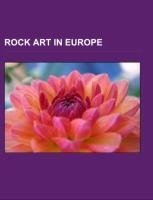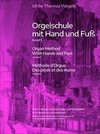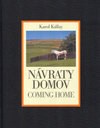
-
 Anglický jazyk
Anglický jazyk
Rock art in Europe
Autor: Source: Wikipedia
Source: Wikipedia. Pages: 38. Chapters: Lascaux, Tanum Municipality, Runestone, Rock carvings at Alta, Rock Drawings in Valcamonica, Carved Stone Balls, Los Alcornocales Natural Park, Bohuslän, Knowth, Altuna Runestone, Rock carvings in Central Norway, Kamyana... Viac o knihe
Na objednávku
16.11 €
bežná cena: 17.90 €
O knihe
Source: Wikipedia. Pages: 38. Chapters: Lascaux, Tanum Municipality, Runestone, Rock carvings at Alta, Rock Drawings in Valcamonica, Carved Stone Balls, Los Alcornocales Natural Park, Bohuslän, Knowth, Altuna Runestone, Rock carvings in Central Norway, Kamyana Mohyla, List of rock carvings in Norway, Mercantour National Park, Creswell Crags, Rock carvings at Tennes, Picture stone, Astuvansalmi rock paintings, Painted pebbles, Ural pictograms, Rock carvings at Vingen, Ignateva Cave, Abecediary, Camunian rose, Finnish Rock Art, Rock carvings at Møllerstufossen, Rock carvings at Åsli, Sculptured stones, Grave orb, Bagnolo stele, Rock carvings at Drotten, Rock carvings at Eidefoss, Kanozero Petroglyphs, Vallée des Merveilles, Ughtasar Petroglyphs. Excerpt: A runestone is typically a raised stone with a runic inscription, but the term can also be applied to inscriptions on boulders and on bedrock. The tradition began in the 4th century, and it lasted into the 12th century, but most of the runestones date from the late Viking Age. Most runestones are located in Scandinavia, but there are also scattered runestones in locations that were visited by Norsemen during the Viking Age. Runestones are often memorials to deceased men. Runestones were usually brightly colored when erected, though this is no longer evident as the color has worn off. The Snoldelev stone, one of the oldest runestones in DenmarkThe tradition of raising stones that had runic inscriptions first appeared in the 4th and 5th century in Norway and Sweden, and these early runestones were usually placed next to graves. The earliest Danish runestones appeared in the 6th and 7th centuries, and there are about 50 runestones from the Migration Period in Scandinavia. Most runestones were erected during the period 950-1100 CE, and then they were mostly raised in Sweden and Denmark, and to a lesser degree in Norway. The tradition is mentioned in both Ynglinga saga and Hávamál: What resulted in the production of most runestone was a trend that began in Denmark in the 960s. King Harald Bluetooth had just been baptized and in order to mark the arrival of a new order and a new age, he commanded the construction of a runestone. The inscription reads King Haraldr ordered this monument made in memory of Gormr, his father, and in memory of Þyrvé, his mother; that Haraldr who won for himself all of Denmark and Norway and made the Danes Christian.The runestone has three sides of which two are decorated with images. On one side, there is an animal that is the prototype of the runic animals that would be commonly engraved on runestones, and on another side there is Denmark's oldest depiction of Jesus. Shortly after this stone had been made, something happened in Scandinavia's r
- Vydavateľstvo: Books LLC, Reference Series
- Rok vydania: 2019
- Formát: Paperback
- Rozmer: 246 x 189 mm
- Jazyk: Anglický jazyk
- ISBN: 9781233145645







 Ruský jazyk
Ruský jazyk 



 Nemecký jazyk
Nemecký jazyk 
